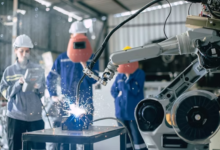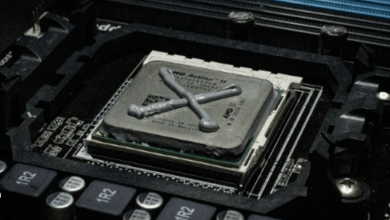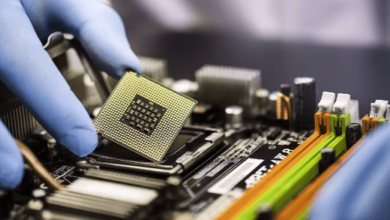Surface Mount Technology (SMT) Explained: From Basics to Advanced Applications

Surface Mount Technology (SMT) has revolutionized the electronics manufacturing industry, providing a method for mounting electronic components directly onto the surface of printed circuit boards (PCBs). As a cornerstone of modern electronics, SMT plays a pivotal role in the manufacturing of various electronic devices, ranging from consumer gadgets to complex industrial equipment. This article will delve into the fundamentals of SMT, its significance, and advanced applications, while also exploring its role within the broader PCBA process.
What is SMT?
Definition and Importance
SMT, or Surface Mount Technology, refers to a method of electronic assembly where components are mounted directly onto the surface of PCBs rather than inserting them through holes, as is done in traditional through-hole technology. This technique enables manufacturers to achieve higher component densities and smaller PCB sizes, which are essential in modern electronics design.
The adoption of SMT has transformed the electronics landscape by allowing for faster production times, reduced costs, and improved reliability. This technology is instrumental in meeting the demands of an increasingly miniaturized and complex electronic world.
SMT Meaning: Components and Processes
Components Used in SMT
SMT involves various types of components that are specifically designed for surface mounting. These include:
- Resistors and Capacitors: These basic passive components are essential in almost every electronic circuit.
- Integrated Circuits (ICs): SMT allows for the mounting of complex ICs that perform multiple functions in a compact form.
- Inductors: These are used in power supply circuits and other applications where magnetic fields are involved.
- Connectors and Switches: Surface-mounted connectors facilitate easier connections between different parts of a device.
- LEDs: Surface-mounted LEDs are widely used in display technology and indicators due to their small size and efficiency.
The SMT Process
The SMT process consists of several critical steps, which include:
- Design and Layout: Engineers use software tools to design the PCB layout, ensuring that the SMT components are arranged efficiently.
- Solder Paste Application: Solder paste is applied to the pads on the PCB where components will be placed. This is usually done using a stencil to ensure accuracy.
- Component Placement: Automated pick-and-place machines position the SMT components onto the solder paste-covered pads with high precision.
- Reflow Soldering: The PCB is then passed through a reflow oven, where the solder paste is heated until it melts, forming a strong connection between the components and the PCB.
- Inspection and Testing: After soldering, the assembly is inspected using automated optical inspection (AOI) and tested to ensure functionality.
These steps highlight how SMT integrates into the broader PCBA process, where the printed circuit board assembly (PCBA) involves assembling various electronic components onto a PCB to create a functional electronic device.
Advantages of SMT
1. Higher Component Density
One of the primary advantages of SMT is its ability to accommodate a higher density of components. This is particularly important in modern devices that require miniaturization, such as smartphones and wearables. By reducing the size of components and eliminating the need for through-hole mounting, manufacturers can fit more functionality into smaller devices.
2. Improved Performance
SMT offers several performance benefits over traditional through-hole technology. Surface-mounted components have shorter leads, resulting in lower inductance and resistance. This translates to better signal integrity, reduced electromagnetic interference, and improved overall performance of electronic devices.
3. Cost-Effectiveness
The SMT process is generally more cost-effective due to reduced material usage, fewer assembly steps, and the ability to automate production. Automated placement and reflow soldering minimize labor costs and increase throughput, making it an attractive option for manufacturers.
4. Better Thermal and Electrical Performance
Surface-mounted components typically have better thermal and electrical performance. Their design allows for more effective heat dissipation, which is crucial in high-power applications. Moreover, the smaller footprint of SMT components leads to improved electrical performance, making them suitable for high-frequency applications.
5. Flexibility in Design
SMT offers significant flexibility in PCB design. Engineers can experiment with component layouts, which can lead to innovative designs and functionalities. The technology supports a wide range of applications, from consumer electronics to automotive systems.
Advanced Applications of SMT
As SMT technology has matured, it has found applications in various industries beyond traditional electronics manufacturing. Here are some advanced applications of SMT:
1. Consumer Electronics
SMT is widely used in consumer electronics such as smartphones, tablets, laptops, and smart home devices. The demand for compact and lightweight designs in these products makes SMT an ideal choice, allowing for the integration of more features without increasing device size.
2. Automotive Electronics
The automotive industry has increasingly embraced SMT for electronic control units (ECUs), infotainment systems, and safety features. SMT’s reliability and compactness are critical in vehicles where space and weight are at a premium. Additionally, SMT helps enhance performance and durability, which are vital in automotive applications.
3. Medical Devices
In the medical field, SMT is used in devices such as pacemakers, diagnostic equipment, and wearable health monitors. The need for reliability and precision in medical applications makes SMT an attractive option. Advanced SMT techniques ensure that devices meet stringent regulatory standards and perform consistently under various conditions.
4. Aerospace and Defense
SMT technology is crucial in aerospace and defense applications, where performance, reliability, and weight savings are essential. Components are often subjected to extreme conditions, and SMT’s robust connections are vital for ensuring the functionality of mission-critical systems.
5. Internet of Things (IoT)
With the rise of the Internet of Things (IoT), SMT has become increasingly relevant. IoT devices, which often require connectivity, power management, and compact designs, benefit from SMT’s capabilities. The ability to integrate multiple functionalities into a small form factor is a key advantage in the rapidly growing IoT market.
Challenges in SMT
While SMT offers numerous advantages, it also comes with challenges that manufacturers must address:
1. Handling and Placement Issues
SMT components are typically smaller and more delicate than their through-hole counterparts. This can lead to handling and placement challenges, especially when using automated machines. Manufacturers need to ensure that pick-and-place machines are calibrated correctly to avoid misplacements or damage to components.
2. Soldering Quality
The reflow soldering process is critical to the success of SMT. Issues such as improper solder paste application, incorrect oven temperature profiles, or contamination can lead to soldering defects, which can compromise the reliability of the final product. Continuous monitoring and optimization of the soldering process are essential to maintaining quality.
3. Thermal Management
As components become smaller and more densely packed, managing heat dissipation becomes increasingly challenging. Manufacturers must carefully consider thermal design to prevent overheating, which can lead to component failure. This often requires the use of specialized materials and design techniques.
4. Design Complexity
The design process for SMT can be more complex than for through-hole technology. Engineers must account for factors such as component placement, pad design, and solder paste application. This complexity can increase the time and cost of the design phase.
Future Trends in SMT
As technology continues to evolve, several trends are emerging in the SMT landscape:
1. Miniaturization
The demand for smaller and more efficient electronic devices will continue to drive the miniaturization of components. This trend will lead to innovations in SMT, resulting in even smaller and more densely packed assemblies.
2. Automation and Industry 4.0
The integration of automation and Industry 4.0 technologies is transforming SMT manufacturing. Smart factories equipped with IoT devices, data analytics, and machine learning will enhance production efficiency, reduce downtime, and improve quality control.
3. Advanced Materials
The development of advanced materials for soldering and PCB fabrication will enhance the performance of SMT assemblies. Materials that offer improved thermal and electrical properties will enable manufacturers to push the boundaries of what is possible in electronic design.
4. Sustainability
With growing awareness of environmental concerns, manufacturers are focusing on sustainable practices in SMT. This includes the use of eco-friendly materials, energy-efficient processes, and recycling initiatives to minimize waste.
Conclusion
Surface Mount Technology (SMT) has become a fundamental aspect of modern electronics manufacturing. Its ability to facilitate higher component densities, improve performance, and reduce costs has made it a preferred choice for a wide range of applications. From consumer electronics to automotive and medical devices, SMT is driving innovation and enabling the development of cutting-edge technologies.
As manufacturers continue to navigate the challenges and opportunities presented by SMT, the technology is poised for further evolution. The future of SMT will likely be characterized by increased automation, miniaturization, and sustainability, ensuring that it remains a vital component of the electronics manufacturing landscape.
Understanding SMT meaning and its integration into the broader PCBA process is essential for anyone involved in electronics design and manufacturing. By embracing the advancements in SMT, manufacturers can continue to push the boundaries of what is possible in electronics, leading to more efficient, reliable, and innovative products.





